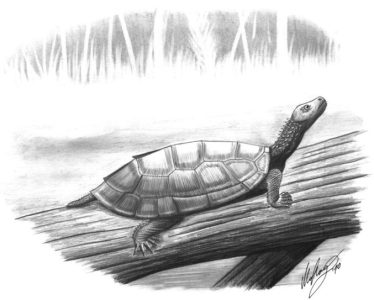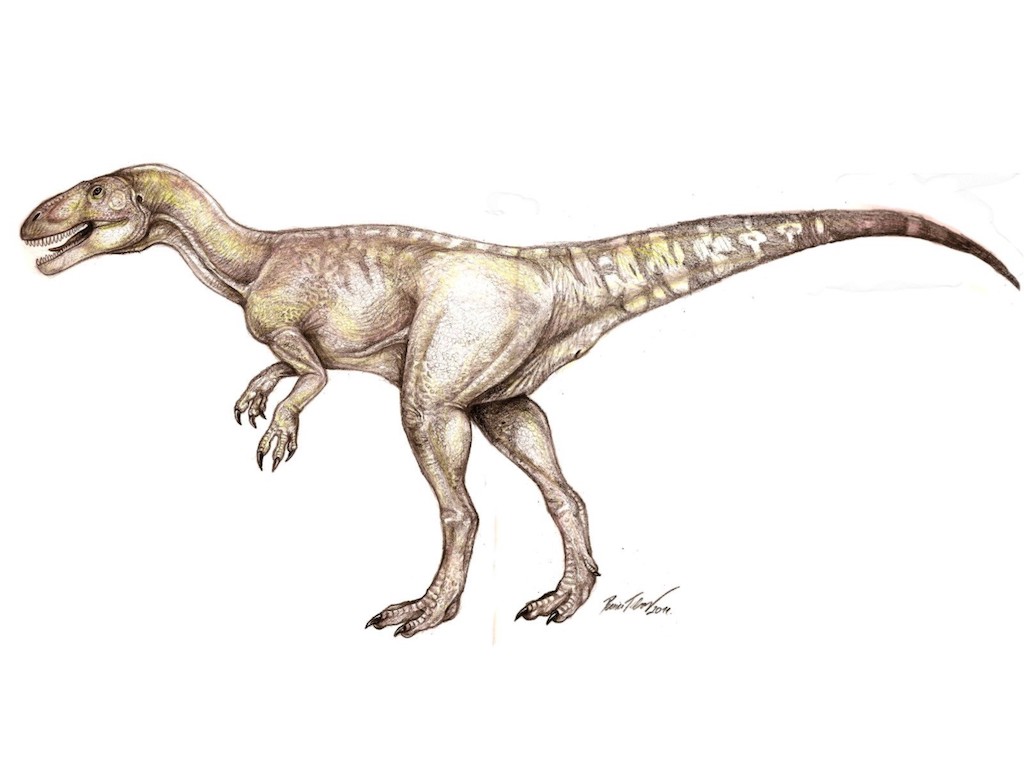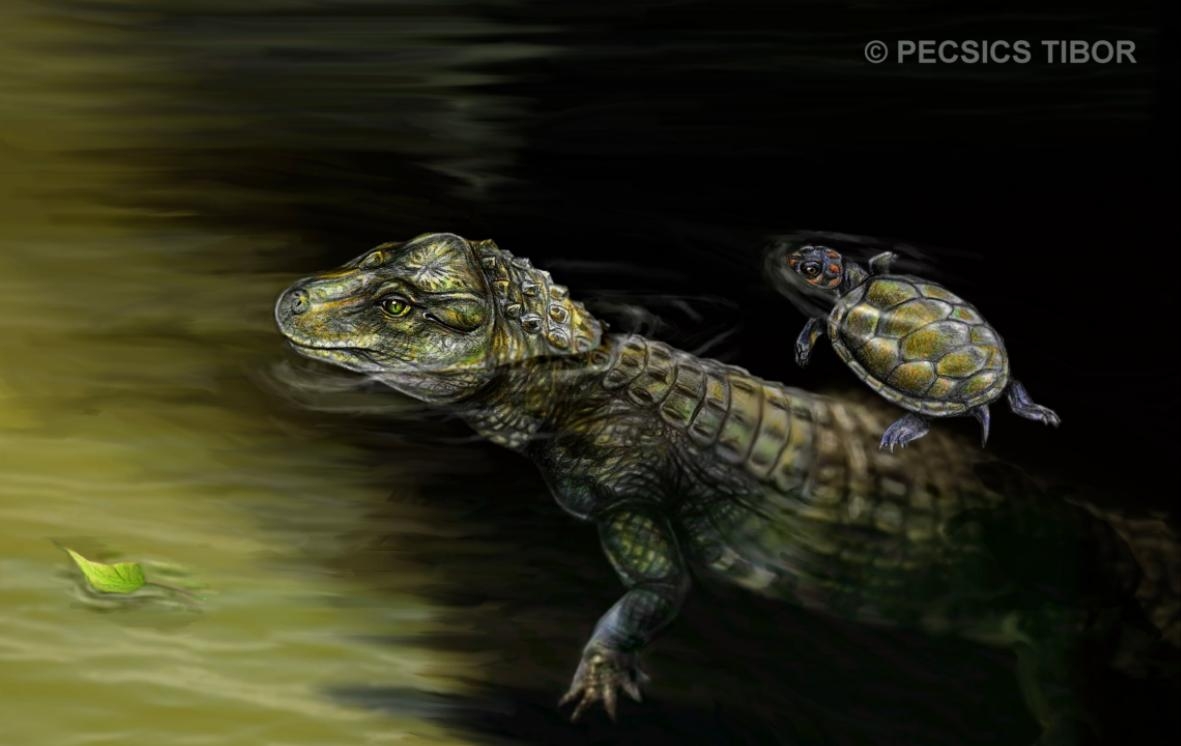
Mochlodon vorosi
Mochlodon, with a body length no longer than 2 meters, was one of the smallest within the clade of rhabodontid ornithopod dinosaurs endemic to Europe…

This enigmatic turtle is very underrepresented in the fauna and only known by a few shell elements. Kallokibotionshows a primitive morphology and represents a late survival of an ancient lineage that originated in the Early Jurassic. Consequently, it was already a “living fossil” at the time of the Iharkút ecosystem. The type and only named species of Kallokibotion, K. bajazidi is reasonably well known from the Upper Cretaceous of Transylvania, Romania and it possessed a heavy, slightly domed shell, curved and strong limb bones and a high skull with a sort of a helmet-like extension over the back of the skull. Apparently, it could not retract its head in the way a modern turtle can do but some sort of sideway retraction might have been possible. Its morphology suggests more terrestrial lifestyle and certain anatomical features in the shell are consistent with that of modern burrowing tortoises. Kallokibotion has so far been considered an endemic group to Romania but recent studies have considerably expanded its range both stratigraphically and geographically in Hungary and Austria. It has been argued that the preservational effect of the Late Cretaceous island geography of former Eastern Europe contributed to the late survival of this ancient lineage.

Mochlodon, with a body length no longer than 2 meters, was one of the smallest within the clade of rhabodontid ornithopod dinosaurs endemic to Europe…

These 4-5 meter long dinosaurs were the top-predators of the Iharkút land during the Late Cretacoeus…

Although there are no wild crocodiles in Europe today, there were 4 different species in the Bakony 85 million years ago…

Besides Bicuspidon, Distortodon, Pelsochamops, and Chromatogenys, other lizards were also identified in the Iharkút fossil material…